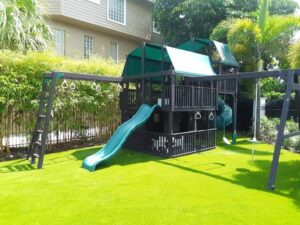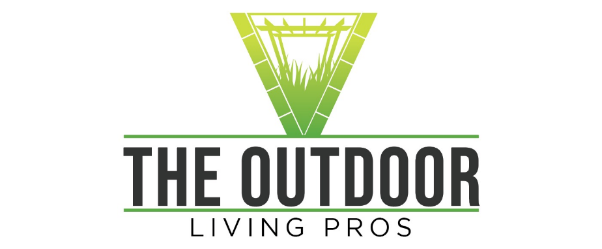Creating a safe and enjoyable play area for children is a top priority for any parent or community. Installing playground turf is an excellent way to provide a durable, low-maintenance, and safe surface for kids to play on. Here’s what you need to know when looking to install a safe playground turf.
Benefits of Playground Turf
- Safety: Soft, cushioned surface reduces the risk of injuries from falls.
- Durability: Withstands heavy use and harsh weather conditions.
- Low Maintenance: No need for mowing, watering, or fertilizing.
- Clean and Hygienic: Easy to clean and less likely to harbor pests.
- All-Weather Usability: Drains quickly and remains usable after rain.
Key Considerations for Safe Playground Turf
- Safety Standards:
- Critical Fall Height: Ensure the turf meets safety standards for fall protection (ASTM F1292). The critical fall height rating should match the height of the playground equipment.
- Non-Toxic Materials: Choose turf made from non-toxic, lead-free materials to ensure it is safe for children.
- Quality and Type of Turf:
- Pile Height and Density: Select a turf with an appropriate pile height and density for playground use. Shorter pile heights with dense fibers provide a soft, cushioned surface.
- Infill Material: Use safe and non-toxic infill materials like silica sand or crumb rubber to add cushioning and support.
- Drainage:
- Proper Drainage: Ensure the turf has an efficient drainage system to prevent water accumulation and keep the play area dry and safe.
- Permeable Backing: Choose turf with a permeable backing to allow water to pass through easily.
- Additional Safety Features:
- Shock Pads: Consider installing an additional shock-absorbing pad under the turf for extra cushioning and protection.
- Seamless Installation: Ensure seams are well-secured and not a tripping hazard.
Steps to Install Playground Turf
- Planning and Site Preparation:
- Measure the Area: Accurately measure the playground area to determine the amount of turf needed.
- Design Layout: Plan the layout, considering the placement of playground equipment and any additional features like benches or pathways.
- Clear the Area: Remove any existing grass, weeds, rocks, and debris. Ensure the surface is clean and level.
- Excavate: Excavate the area to a depth of 3-4 inches to accommodate the base layers.
- Base Installation:
- Sub-Base Layer: Fill the excavated area with a sub-base material like crushed stone or decomposed granite. Compact it thoroughly to create a solid foundation.
- Leveling: Ensure the base is level and smooth, with slight slopes for drainage.
- Installing the Turf:
- Roll Out the Turf: Unroll the synthetic turf over the prepared base, allowing it to acclimate and settle.
- Cut to Fit: Trim the edges to fit the area precisely using a utility knife.
- Secure the Seams: Join multiple pieces of turf using seam tape and adhesive or turf staples. Make sure the seams are tight and well-hidden.
- Anchor the Edges: Secure the perimeter of the turf with landscape spikes or nails, spaced every few inches to prevent lifting.
- Infill Application:
- Distribute Infill: Evenly apply the infill material using a drop spreader or a broom. Brush the turf to help the infill settle.
- Ensure Safety: Make sure the infill material provides adequate cushioning and support, especially around high-use areas like swings and slides.
- Final Touches:
- Brushing: Brush the turf against the grain to lift the fibers and enhance its natural appearance.
- Inspect and Clean: Remove any debris and inspect the area for any loose spots or imperfections.
Maintenance Tips
- Regular Brushing: Brush the turf periodically to keep the fibers upright and maintain a consistent surface.
- Cleaning: Clean any spills or pet waste immediately to prevent staining and odor. Use a mild detergent and water for deeper cleaning.
- Inspecting: Regularly check for any signs of wear or damage and make repairs as needed.
- Rinsing: Occasionally rinse the turf with water to remove dust and debris.
Additional Considerations
- Temperature: Synthetic turf can get hot in direct sunlight, so consider adding shading elements like trees or canopies to keep the play area cool.
- Accessibility: Ensure the playground turf is accessible for all children, including those with disabilities. Consider adding ramps or pathways as needed.
- Warranty: Check the warranty offered by the manufacturer and installer to ensure coverage for any potential issues.
By following these guidelines and taking the necessary precautions, you can create a safe, durable, and enjoyable playground for children. Synthetic playground turf offers a low-maintenance and reliable solution for a kid-friendly play area that can be enjoyed year-round.
12600 S Belcher Rd Suite 106A, Largo, FL 33773, USA
(888) 297-6972


Recent Comments